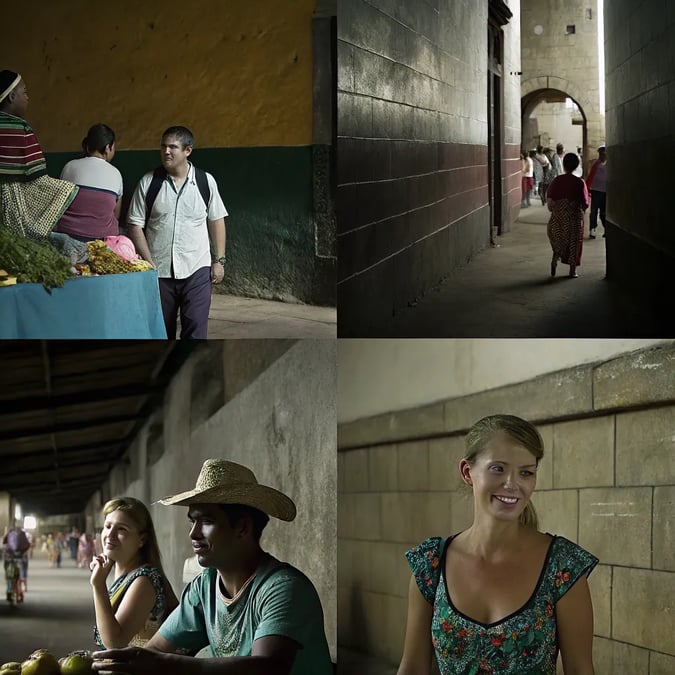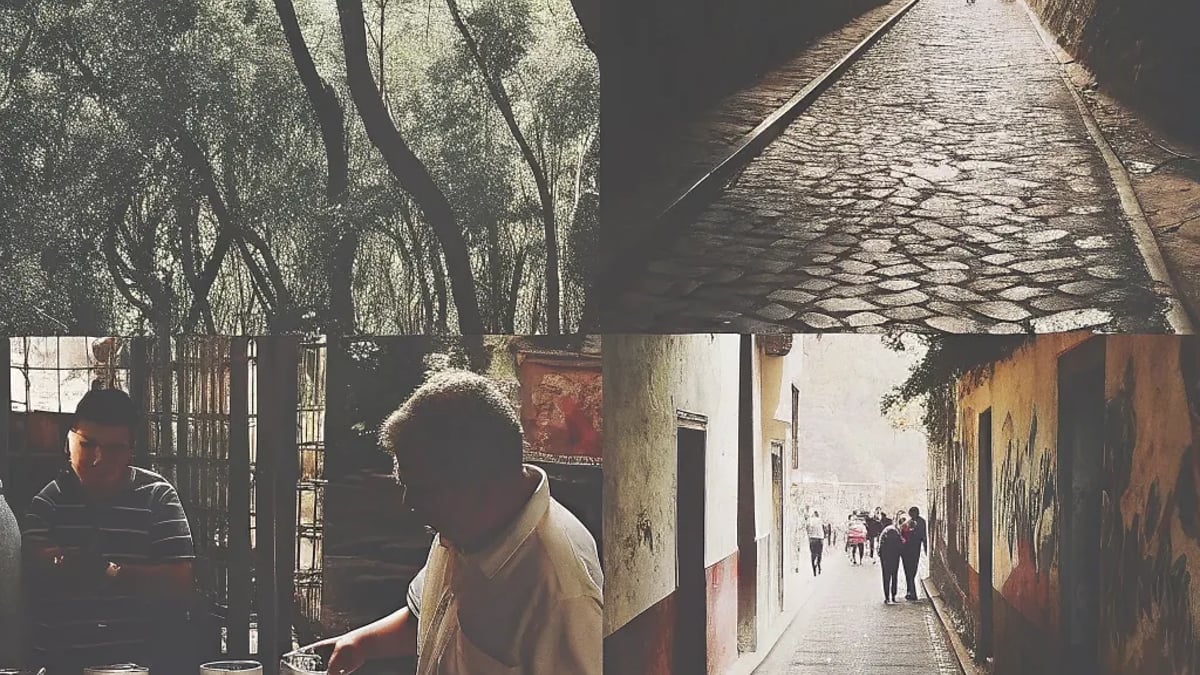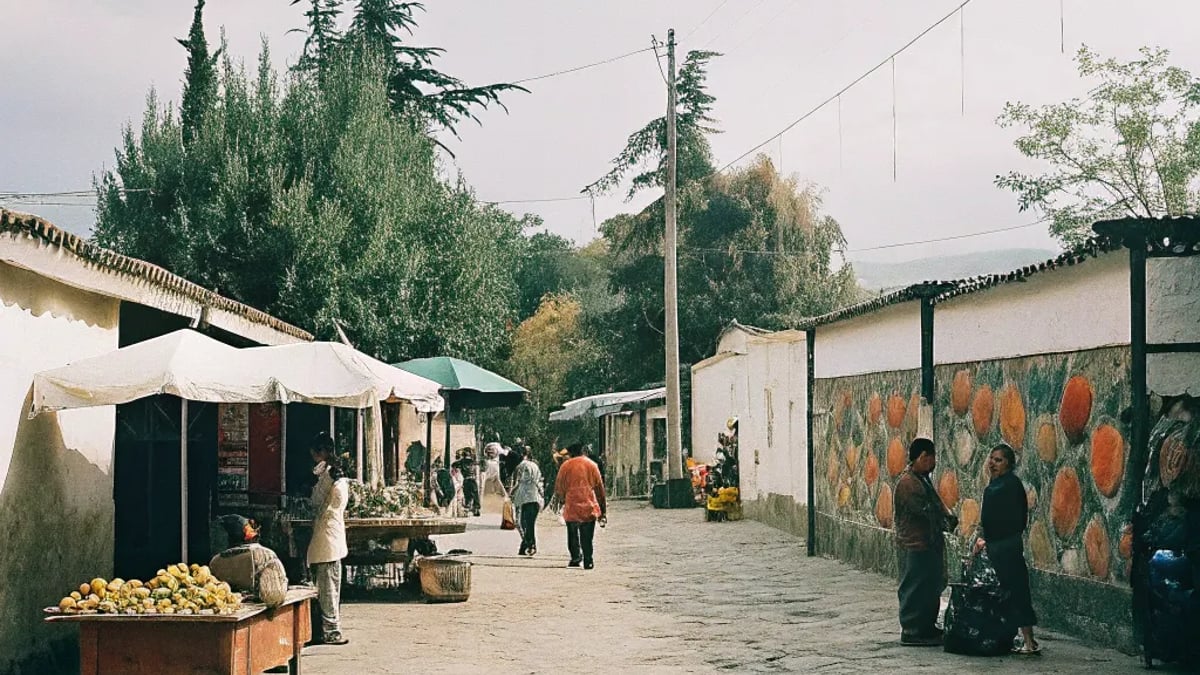
There's something magical about stepping off the tourist treadmill and immersing yourself in a place slowly, deliberately, with intention. Oaxaca, with its rich cultural tapestry, incredible food scene, and unhurried pace, might just be the perfect destination to embrace slow travel. I spent several weeks exploring this captivating Mexican city last year, and what began as a brief visit evolved into an extended stay that changed how I view travel altogether.
What Makes Oaxaca Perfect for Slow Travel?
Oaxaca City sits in a valley surrounded by mountains in southern Mexico, a place where traditions run deep and modern life moves at a refreshingly manageable pace. Unlike the resort-heavy destinations along Mexico's coasts, Oaxaca offers something more authentic – a chance to genuinely connect with local culture, food, and people.
According to many travelers who've spent extended time here, Oaxaca checks all the boxes for slow travel. The walkable historic center makes daily life convenient, while the surrounding villages offer endless opportunities for cultural exploration. As noted by Two Travel Turtles in their month-long stay, "The local food scene is outstanding and affordable. Amenities for daily living are easily accessible on foot."
But what really sets Oaxaca apart is how it rewards those who linger. The longer you stay, the more layers you uncover – from hidden mezcalerias to local artisans who don't advertise their workshops to tourists.

The Slow Travel Mindset
Before diving into a specific itinerary, it's worth considering what slow travel actually means. Unlike traditional vacation-style tourism where you're racing to check off attractions, slow travel embraces a different philosophy.
As The Nomad Experiment explains, there's a fundamental difference "between thinking like a vacationing tourist versus thinking like a local." Where tourists might be in constant "spend, spend, spend" mode, slow travelers seek comfort, routine, and deeper connections.
In Oaxaca, this might mean:
- Renting an apartment instead of staying in a hotel
- Shopping at local markets rather than eating every meal at restaurants
- Learning basic Spanish phrases to connect with neighbors
- Finding a favorite café where they eventually know your order
Setting Up Your Home Base in Oaxaca
The foundation of successful slow travel is finding the right place to call home temporarily. In Oaxaca, you have several neighborhoods to consider:

Centro Histórico
The historic center offers maximum convenience – you'll be steps away from the Zócalo (main square), Santo Domingo Church, and countless restaurants and shops. However, it's also the most touristy and can be noisy.
Many slow travelers prefer to stay just outside Centro, in neighborhoods like:
Jalatlaco
This charming, colorful neighborhood about 15 minutes walking from Centro offers a more local experience while still being convenient. Its cobblestone streets, street art, and quieter atmosphere make it a favorite among expats and long-term visitors.
Reforma
More residential and less touristy, Reforma gives you a glimpse into everyday Oaxacan life while still being walkable to the center (about 20-30 minutes).
For accommodations, Airbnb offers the most home-like options, though monthly rates can still be significant. According to Nomad Numbers, who documented their stay, "Accommodation is one of the most expensive parts of our budget even as slow travelers." They paid approximately $800 USD for a one-bedroom apartment in 2019, though prices have likely increased since then.
For longer stays, local Facebook groups like "Expats in Oaxaca" sometimes list apartments not found on international platforms, often at better rates.
A Week-by-Week Slow Travel Itinerary
Rather than planning your days hour by hour, slow travel works better when you think in terms of weeks, with room for spontaneity and discovery. Here's how you might structure a month in Oaxaca:
Week 1: Orientation and Centro Histórico
Your first week is about getting your bearings and establishing some routines:
Monday-Tuesday: Settling In
- Explore your neighborhood on foot
- Find your local tienda (corner store) for basics
- Locate the nearest market for fresh produce
- Test out a few cafés to find your "regular" spot
Wednesday-Thursday: Centro Exploration
- Wander the Zócalo and people-watch
- Visit the Mercado 20 de Noviembre for lunch
- Explore the Cultural Museum of Oaxaca
- Find a rooftop bar for sunset views of the city
Friday-Sunday: Food Focus
- Take a cooking class to learn about local ingredients
- Visit Mercado Benito Juárez for produce shopping
- Try your hand at cooking a simple Oaxacan dish in your rental
- Sunday: Join locals for the paseo (evening stroll) around the Zócalo
Week 2: Art, Crafts, and Culture
Oaxaca is renowned for its artistic traditions. This week, dive deeper:
Monday-Tuesday: Museum Days
- Visit the Textile Museum of Oaxaca
- Explore the Museum of Contemporary Art
- Find small art galleries tucked away on side streets
Wednesday-Thursday: Creative Workshops
- Take a half-day workshop in weaving, pottery, or wood carving
- Visit Xaquixe, a sustainable glass studio
- Explore the printmaking workshops near Santo Domingo
Friday-Sunday: Market Towns
- Friday: Visit Zaachila's weekly market (less touristy than others)
- Saturday: Explore the famous Tlacolula Sunday Market (go a day early to avoid crowds)
- Sunday: Relax in a local park or plaza
Week 3: Village Explorations
Oaxaca's surrounding villages each specialize in different crafts and have distinct personalities:
Monday-Tuesday: Teotitlán del Valle
- Visit this weaving village and meet master weavers
- Learn about natural dyeing processes
- Hike in the surrounding hills for valley views
Wednesday-Thursday: San Martín Tilcajete and Ocotlán
- Explore alebrijes (wooden animal carvings) in San Martín
- Visit the knife makers and black pottery artisans in Ocotlán
- Take a collectivo (shared taxi) like locals rather than a tour
Friday-Sunday: Monte Albán and Beyond
- Visit the ancient Zapotec ruins of Monte Albán early morning
- Explore the lesser-known archaeological site of Atzompa
- Sunday: Join a local family for comida (main meal in afternoon) if you've made connections
Week 4: Deeper Connections and Farther Afield
By your final week, you'll have established routines and connections that allow for more authentic experiences:
Monday-Tuesday: Mezcal Country
- Visit small-batch mezcal producers in Santiago Matatlán
- Learn about the production process from agave to bottle
- Skip the touristy tastings for more authentic experiences
Wednesday-Thursday: Sierra Norte
- Take an overnight trip to the mountain villages of the Sierra Norte
- Stay in a community-run eco-cabin
- Hike cloud forest trails with local guides
Friday-Sunday: Farewell to Oaxaca
- Revisit favorite spots and say goodbye to new friends
- Purchase any crafts or souvenirs directly from artisans you've met
- Host a small gathering at your rental to thank those who've made your stay special
How Can I Connect Authentically with Locals?
One of the biggest challenges for slow travelers is moving beyond surface-level interactions to form genuine connections. In Oaxaca, this is both easier and harder than you might expect.
Easier because Oaxacans are generally warm and welcoming; harder because genuine relationships take time and cultural understanding. Here are some approaches that have worked for fellow slow travelers:
Language Efforts Matter
Even basic Spanish goes a long way. Consider:
- Taking small-group Spanish lessons at a local language school
- Using language exchange apps to meet locals wanting to practice English
- Learning Oaxaca-specific phrases and words (some of which come from indigenous languages)
Find Regular Spots
Becoming a "regular" somewhere opens doors:
- Visit the same café at the same time several days a week
- Shop from the same vendors at the market
- Join a gym, yoga studio, or dance class where locals go
Participate in Community Events
Oaxaca has countless civic and cultural events where you can participate:
- Attend free concerts in the Zócalo
- Join in neighborhood celebrations for saints' days
- Volunteer with local organizations like Fundación En Vía, which supports women entrepreneurs
As noted by Why We Seek, who spent time housesitting in a small Oaxacan town, "Things move at a slower pace which we've learned to appreciate as slow travelers." This slower pace creates space for more meaningful interactions.
Daily Living: Practical Matters
Transportation
Oaxaca City is wonderfully walkable, but for longer stays, you'll want to master local transportation:
- Collectivos: These shared taxis run set routes and are incredibly affordable (usually under $1 USD)
- Local buses: Even cheaper than collectivos but with less predictable schedules
- Bicycle rental: Several shops offer monthly bike rentals for about $50-60 USD
- Taxis: Still affordable by US/European standards but negotiate the fare before getting in
Shopping and Eating Like a Local
To truly live like a local (and save money), establish these habits:
- Market shopping: Visit Mercado Sánchez Pascuas or Central de Abastos for produce at local prices
- Comida corrida: Look for small restaurants offering set lunch menus for 80-120 pesos ($4-6 USD)
- Street food: Once your stomach adjusts, explore the incredible tlayudas, memelas, and tamales from street vendors
- Cook at home: Invite new local friends over for a meal exchange – you cook something from your home country, they share Oaxacan techniques
Digital Nomad Needs
If you're working remotely while in Oaxaca:
- Coworking spaces: Convivio and Selina offer reliable internet and community
- Cafés with good WiFi: Café Brújula and Café Los Cuiles are popular with digital nomads
- SIM card: Purchase a Telcel SIM for backup internet (approximately 200 pesos for 3GB)
Embracing the Unexpected
Perhaps the most important aspect of slow travel in Oaxaca – or anywhere – is leaving room for the unexpected. The most memorable experiences often come from unplanned encounters and detours.
One Tuesday morning, I was walking to my regular café when I noticed a small procession forming near the church of La Soledad. I abandoned my plans and followed along, eventually joining a neighborhood celebration I never would have found in any guidebook. The family organizing the event noticed my interest and invited me to join them for lunch – an experience that led to a friendship that continues today.
These moments can't be scheduled or planned, but they're the heart of slow travel. They happen when you have time to wander, observe, and say yes to unexpected invitations.
Is Slow Travel in Oaxaca Right for Everyone?
While Oaxaca offers an ideal setting for slow travel, it's not without challenges. The city sits at over 5,000 feet elevation, which can affect some travelers. Water and food safety require some adaptation. And while Oaxaca is generally safe, it's still wise to exercise normal precautions.
Slow travel also requires a certain mindset – one that values depth over breadth, connection over consumption, and experience over checklists. If you're someone who gets antsy staying in one place or feels the need to see everything, the slow travel approach might feel constraining rather than liberating.
But for those who've embraced it, slow travel in Oaxaca offers something increasingly rare in our hyperconnected world: a chance to truly be present, to form meaningful connections, and to experience a place not as a consumer but as a temporary local.
As I sit writing this from a café where the barista now greets me by name and automatically makes my usual order, I can't help but feel that this – not the museums or monuments – is the real treasure of travel. Taking the time to belong, however briefly, in a place as special as Oaxaca.
References and Further Reading
For more insights on slow travel in Oaxaca and beyond:
Remember, the best itinerary is the one that leaves room for discovery. Buen viaje!
Tags

About Clara Vanderbeek the Author
Clara Vanderbeek is a consummate wanderer and slow-travel aficionado, dedicated to crafting thoughtful travel guides that encourage travelers to savor every moment and delve deeper into the heart of each destination. Her expertise lies in uncovering hidden gems and local cultures, fostering genuine connections with the places she explores.
Recommended Articles
Scenic Train Tours in Italy: What to Know for 2026
Discover scenic train tours in Italy for 2026, exploring breathtaking landscapes and iconic destinations with comfort and ease.
10 Lesser-Known Facts About Adults Only Hotels
Discover ten surprising facts about adults-only hotels, ideal for couples and solo travelers seeking relaxation and unique experiences.
Top Adults Only All-Inclusive Resorts to Escape To
Explore top adults-only all-inclusive resorts perfect for relaxation, romance, and unforgettable experiences tailored for couples.
Top Scenic Road Trips to Take Across the U.S.
Discover breathtaking road trips across the U.S., from coastal views to mountain vistas, with tips for an unforgettable adventure.
10 Bucket List Destinations to Consider This Year
Explore ten captivating bucket list destinations including Maldives, Japan, Italy, and more. Perfect travel ideas for your next adventure this year!




